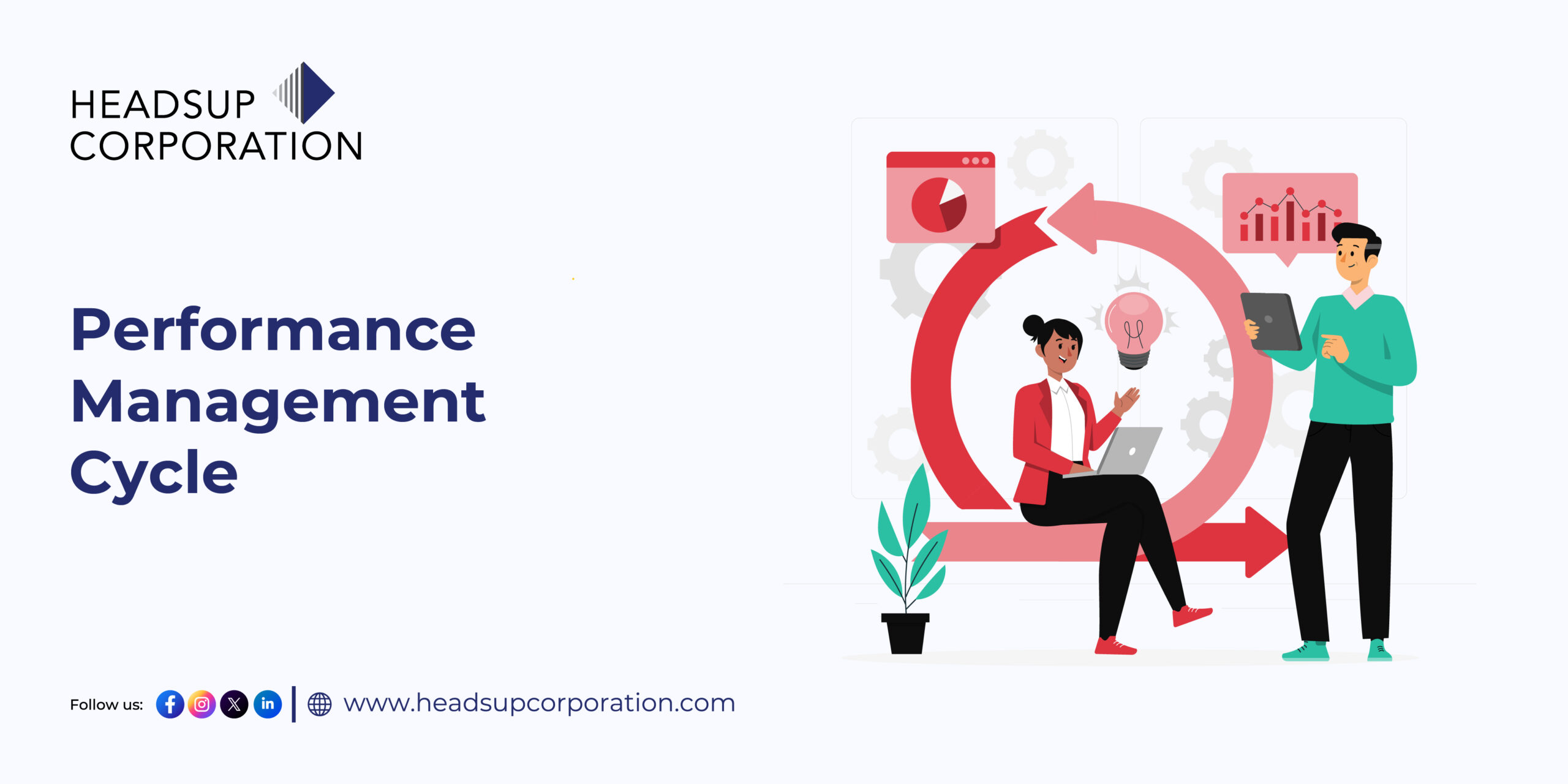
Understanding the Performance Management Cycle
If you’re picturing the performance management cycle as a once-a-year awkward appraisal talk, think again. Modern companies have evolved. Today, performance management is no longer about just tracking who’s doing “well enough” , it’s about enabling real growth, encouraging development, and aligning every employee’s performance with larger business goals. At the heart of HR, the performance management cycle (PM cycle) ensures that organisations don’t just measure performance, they actively manage it.
This process sits at the crossroads of strategy and human potential. Done right, it builds a high-performing culture, boosts engagement, and creates a feedback-rich environment where people actually know how they’re doing and how they can do better.
What is the Performance Management Cycle?
The PM cycle is a continuous loop of planning, monitoring, reviewing, and rewarding employee performance, typically over an annual or biannual period. Unlike a one-time appraisal, the PM cycle is a system that keeps performance aligned with evolving goals.
It starts with goal setting: aligning individual objectives with team and company strategy. This is followed by regular check-ins, feedback loops, coaching, and ends with a formal evaluation, often tied to rewards, learning plans, or career paths. It’s not just about who’s hitting targets but why, how, and what comes next. Most organisations today run this in sync with business quarters or key project timelines, making it a dynamic, living process, rather than a static ritual.
PM Cycle & Individual Development Plans (IDPs)
The PM cycle doesn’t just track outcomes, it supports growth. That’s where IDPs (Individual Development Plans) come in. Once performance is assessed, IDPs map out how an employee can improve, upskill, or move into new roles.
For example, if a marketing associate shows great analytical thinking, their IDP may suggest training in performance metrics or data storytelling. The PM cycle uncovers potential, and the IDP unlocks it. While the PM cycle deals with internal talent growth, full-cycle recruiting refers to managing all stages of hiring, from sourcing to onboarding. Think of it as the “prequel” to performance management. Great performance management begins with hiring the right people, and full-cycle recruitment ensures those foundations are strong.
Examples of Individual Development Plans
For a junior designer: Take a UX certification + shadow senior designer on 2 live projects
For a sales executive: Improve negotiation skills via workshops + mentor 1 new joiner
For a team lead: Develop emotional intelligence + attend leadership coaching sessions
These are tailored, measurable and tied to real business goals making them powerful tools in the PM process. Here’s where performance starts to pay off. Many companies link PM outcomes with variable pay bonuses, performance-linked incentives, or profit-sharing. It motivates employees to not just meet expectations, but exceed them. Transparency here is key. People should know how effort translates into reward.
Related Blog:- What is Performance Management?
The 4 Stages of the Performance Management Cycle
A well-run performance management system isn’t about micromanagement or surprise appraisals, it’s about creating a rhythm. A clear, transparent cycle that helps people stay aligned, motivated, and continuously growing.
- Planning: Setting the Foundation Right: This is the starting line. The planning phase is where clarity is everything. Managers and employees sit down to define goals individual, team, and company-wide and ensure everyone understands the “why” behind their work.
- Monitoring: It’s All About Real-Time Feedback: Gone are the days of “See you at the next review.” The monitoring phase encourages regular conversations, coaching and real-time check-ins not just to track performance, but to support it.
- Reviewing: Reflect, Recognise, Reboot: This is the reflection point. At the end of the cycle (typically quarterly, bi-annually or annually), employees and managers look back at what was achieved and how it was done.
- Rewarding: More Than Just a Bonus: Performance should be appreciated and that appreciation should be meaningful. This stage focuses on recognising top performers, rewarding results, and reinforcing behaviours that drive culture.
The performance management cycle isn’t a tick-the-box HR activity, it’s a living system that drives business success. When combined with smart hiring, meaningful IDPs, and transparent rewards, it becomes a culture-building engine. At its best, it doesn’t just measure performance, it nurtures it.






